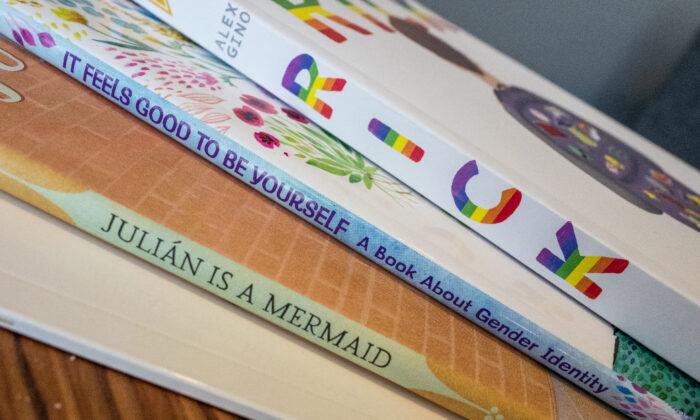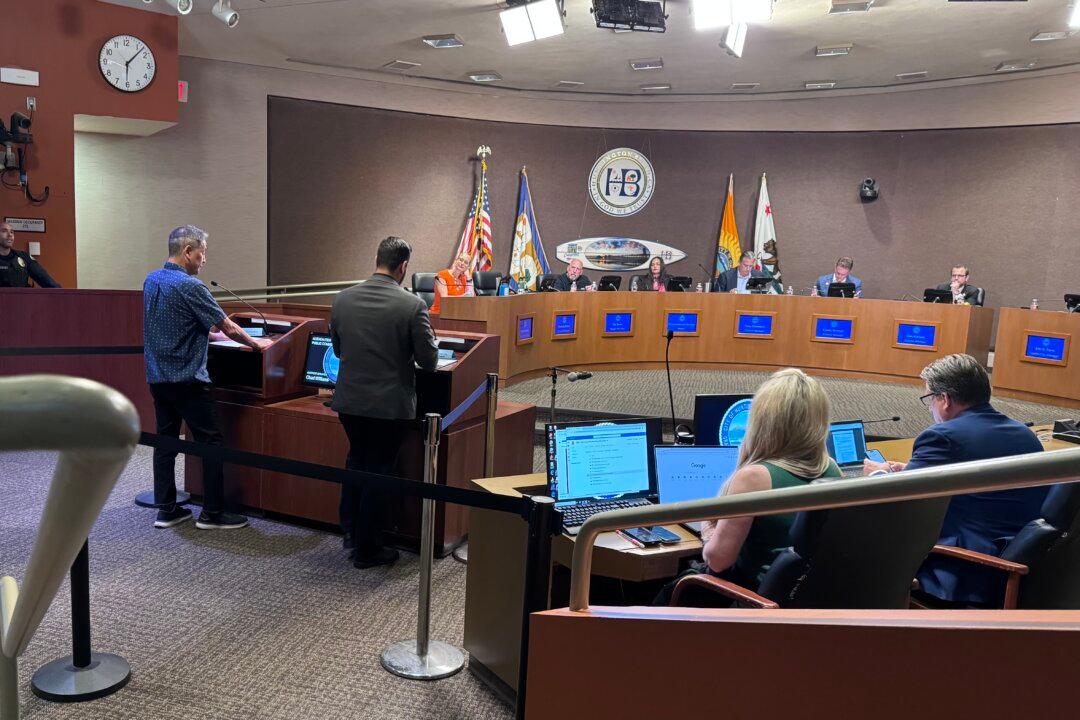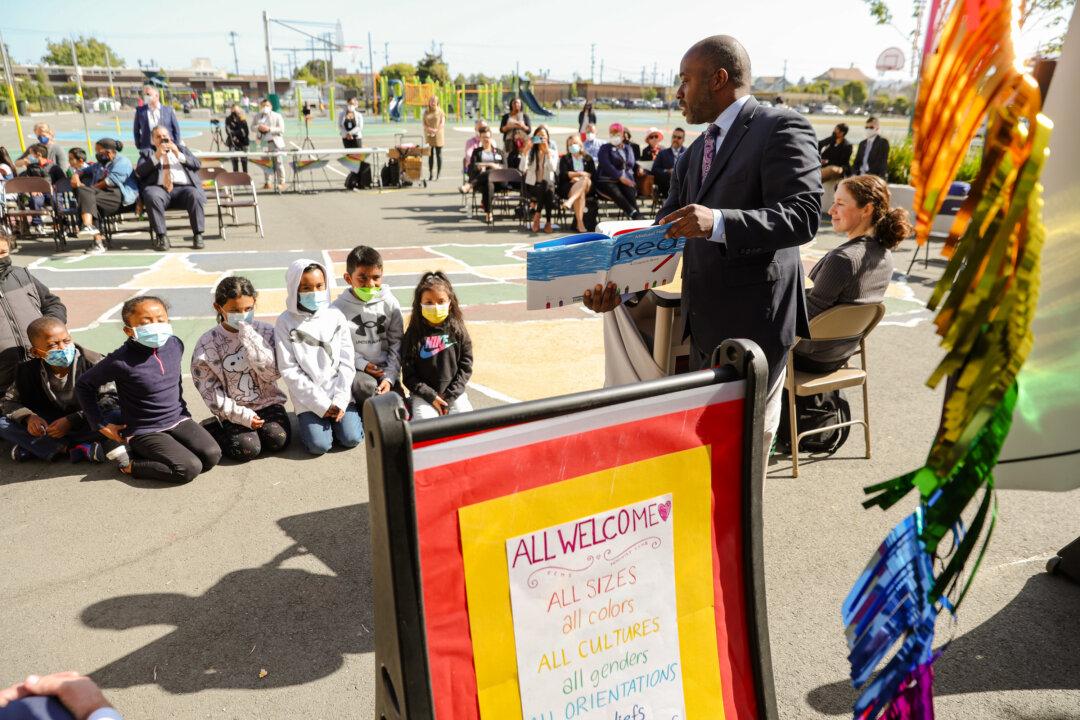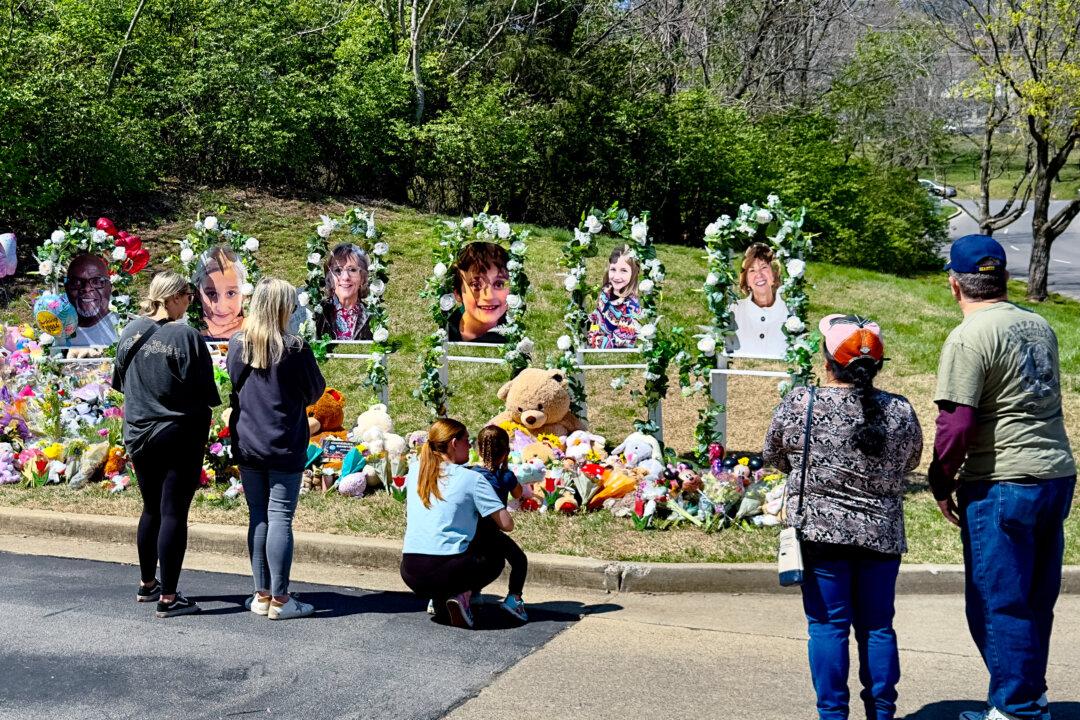As California students head back to school this year, they may encounter books and materials promoting LGBT topics, transgenderism, and gender ideology for children as young as preschool and kindergarten.
Brenda Lebsack, a teacher of 30 years and a former school board member for the Orange Unified School District, told The Epoch Times that LGBT groups have expanded the word “queer” to encompass hundreds of different sexualities and gender identities and that those are now being taught to children in schools.
“Historically, the acronym included lesbian, gay, bisexual, and transgender but has continued to expand to include queer, questioning, intersex, asexual, allies, and alternative identities (LGBTQQIAA), as well as expanding concepts that may fall under this umbrella term in the future.”

Now, the state’s education department is recommending books to students that teach expanded sexualities and gender identities.
The book describes a young boy named Julian who wants to be a mermaid after he sees a parade of people dressed up as mermaids while out with his grandmother.
“Julian has a good idea,” the book reads as it shows Julian shedding his clothes and donning lipstick and curtains for his mermaid costume.
When Julian’s grandmother sees his costume, she gives him a beaded necklace to complete his outfit. She then takes him outside to join the other adults dressed up as mermaids.

“Call Me Max” was written by Kyle Lukoff, a transgender writer.
In the book, Max says, “When I look in the mirror, I see ... a boy who is transgender.”
“When a baby is born, a grown-up says, ‘It’s a boy!’ or ‘It’s a girl!’” the book reads. “When a baby grows up to be transgender, it means that the grown-up who said they were a boy or a girl made a mistake.”
At the end of the book, Max says, “Being a boy isn’t better than being a girl. But being myself is the best.”
The book was written by Theresa Thorn, host of the comedy podcast “One Bad Mother,” and illustrated by Noah Grigni, a nonbinary transgender writer.
It introduces Ruthie—who was born a boy but later declared her gender identity was a girl—and her brother, Xavier, who was born a boy and whose gender identity is “cisgender.”

The siblings have a pair of friends who are both nonbinary—one is “both a boy and a girl,” while another is “neither a boy nor a girl.”
“Some kids don’t feel exactly like a boy or a girl—they feel like neither,” the book reads. “Some kids feel that their gender identity isn’t always the same—it’s often changing. And even with all these possible ways to be, some kids don’t feel any of the words they know fit them exactly right.”
At the end of the book, there’s a list of “helpful terms,” including the terms “intersex,” “transgender,” “gender identity,” “gender expression,” “non-binary,” and “cisgender.”
“Your feelings about your gender are real. Listen to your heart,” the book reads. “It feels good to be yourself, doesn’t it?”
In the book, Rick joins a Rainbow Spectrum club at school, where members discuss their gender identity, sexual orientation, pronouns, and “LGBTQIAP+ rights.”
Rick learns about the terms “asexual”; “aromantic,” which describes people who aren’t sexually or romantically attracted to anyone; “graysexual” and “grayromantic,” which refer to people who are occasionally attracted to people; and “demisexual” and “demiromantic,” which describe those who are only romantically or sexually attracted to people “after developing a deep connection.”
In another part of the book, Rick’s grandfather dresses up as a woman and does Rick’s makeup for an event.
“Some people who wear skirts and makeup are women,” Rick’s grandfather says in the book. “Me, I’m a guy, no matter how I’m dressed.”
Toward the end of the book, Rick “comes out” to his father as asexual.
When Rick’s father replies that Rick is too young to be “something like that,” he’s dismissed by Rick, who insists that “right now, my path is that I’m not interested in anyone.”
Across the nation, these titles have made their way into schools in other states, such as New York and Oregon.

Some of the books in the collection include “Julian is a Mermaid”; “Love is Love,” a story about gay relationships aimed at first graders; and “I’m Not a Girl: A Transgender Story,” also aimed at first graders.
Betsy McCaughey, an author and public policy expert who previously served as the lieutenant governor of New York, said the spread of such materials doesn’t proportionately reflect the actual number of people who experience gender dysphoria.

“These books don’t belong in our elementary schools,” McCaughey told The Epoch Times in a statement. “Gender dysphoria is an extremely rare affliction. Those who have it deserve our respect and sympathy. But telling all children about it is unnecessary, confusing to them, and hurtful.”





